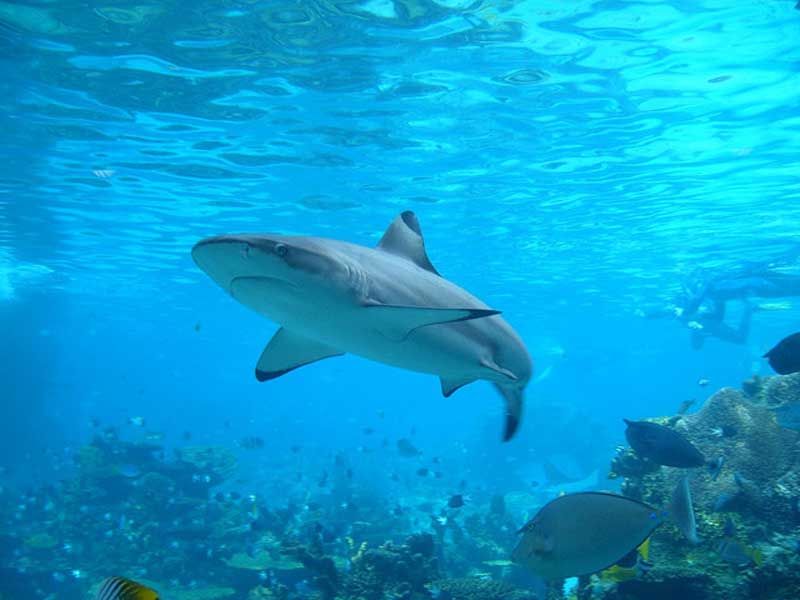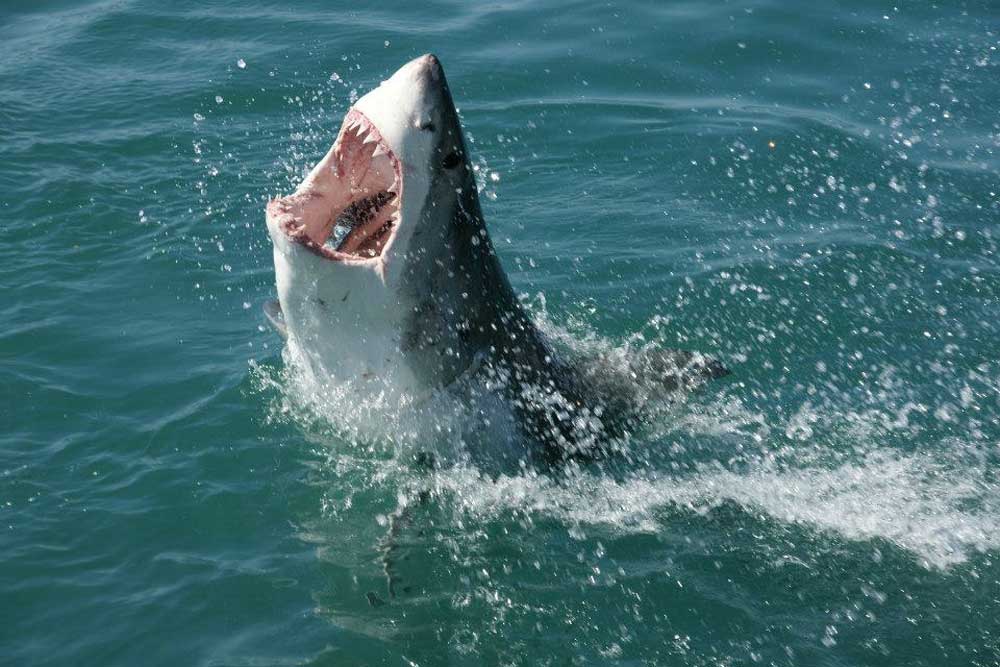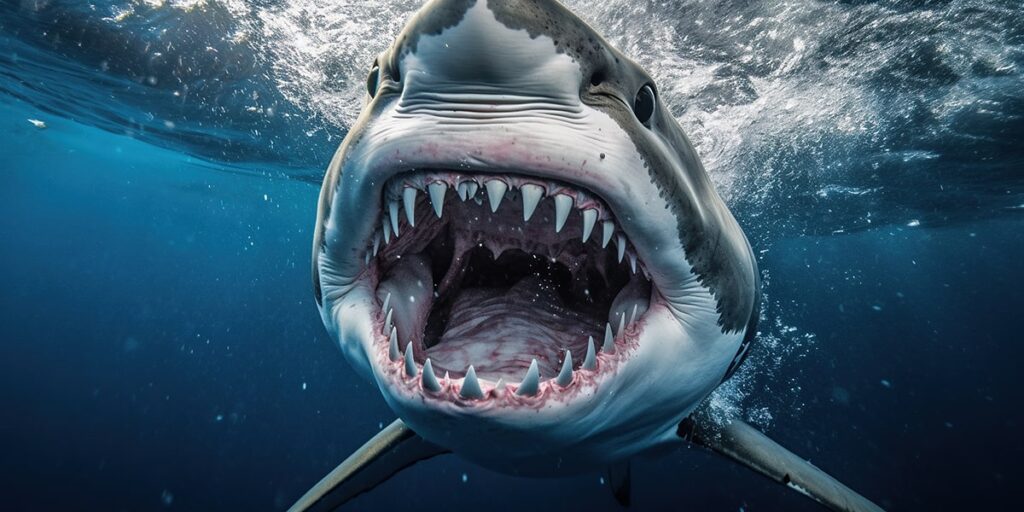- Sense of smell: Sharks have an extremely keen sense of smell and can smell blood from a long distance. The exact distance can be between 400 m and 2 km, depending on the shark species and water conditions. 2/3 of a shark’s brain is dedicated to its sense of smell
- Sinking: If a shark stops swimming, it sinks to the bottom. Some shark species die if they don’t swim because their lives depend on water constantly flowing through their gills (which only happens when they are propelled through the water)
- 400 million years: Sharks have been around without much change for the last 400 million years – meaning they were here long before the dinosaurs arrived
- Polar bear-eaters: The Greenland shark (also called ‘merman’ or ‘Somniosus microcephalus’) feeds on polar bears and can live up to 200 years
- Tiger sharks: As soon as tiger shark embryos develop teeth, they attack their siblings and eat each other (while still in their mother’s stomach). This is necessary for the embryos to grow. Since the tiger shark has two wombs, only two embryos are left at birth
- Acceleration: The shortfin mako shark can accelerate faster than a Porsche
- Bull sharks: The bull shark can live in saltwater as well as freshwater
- Largest sharks: The world’s two largest sharks, whale shark and brugden, are harmless plankton eaters
- Smallest shark: The world’s smallest shark, the pygmy shark, is only 15 cm long as an adult
- Teeth: The great white shark can lose up to 1,000 teeth in 1 year. In comparison, it takes humans 7 years to lose 20 teeth. It takes as little as 3 days to replace a tooth that has fallen out. In a shark’s lifetime, up to 30,000 teeth can grow in its jaws

Fact: Sharks kill 12 people every year – humans kill 11,417 sharks every hour
Facts about Greenland sharks
- Age: I a 2016 study the oldest living Greenland shark was estimated to be between 272 and 512 years old (the age of the Greenland shark cannot be accurately measured). The high longevity of Greenland sharks probably makes them the longest-living vertebrate on the planet. Before the discovery of the Greenland shark’s long lifespan, a 211-year-old bowhead whale which held the record as the world’s oldest vertebrate.
- Gender maturity: Age at maturity: Greenland sharks reach sexual maturity at around 100 years of age (females do not reach sexual maturity until they are around 4 meters long). They are usually sexually mature at around 150 years.
More facts about sharks
- Skeleton: Sharks have no bones, as their skeletons are made entirely of cartilage. When sharks die, their bodies are completely dissolved by the water, leaving only their teeth
- Food: A fully grown great white shark can survive for 3 months without eating
- Carnivores: There are no herbivorous sharks
- Sharp teeth: Tiger shark teeth are so sharp they can cut through a sea turtle’s shell
- Cancer: Researchers study shark cartilage for possible cancer cures because sharks rarely get cancer
- Species: There are at least 500 shark species in the world
- Overfishing: Overfishing can have serious consequences for sharks. The whale shark, for example, cannot breed before its 30th year of life and its total lifespan is 60-100 years. Therefore, they can’t reproduce fast enough to offset the population decline caused by fishing
- Phobia: ‘Galeophobia’ is the fear of sharks. The term comes from the Greek word ‘galeos’, meaning “dogfish, small shark” and was the name of a specific type of shark with whale-like features
- Age: Sharks generally live 2-3 times the age at which they reach sexual maturity. So if a shark reaches sexual maturity at 70 years old, it can live to be around 140 – 210 years old.
- Growth: Unlike mammals, which stop growing at a certain age, sharks – like fish – continue to grow throughout their lives.

Fact: The great white shark can survive for up to 3 months without food
Facts about shark attacks
- Bite: In the rare cases where sharks attack humans, they usually only bite once. They usually only hold their victim for a few seconds before realizing that it’s not a marine animal they’ve caught
- Sharks vs. humans: Sharks kill 12 people every year – humans kill 11,417 sharks every hour
- Human bites: You are more likely to be bitten by another human being than a shark
- Coastal attack: The vast majority of shark attacks occur up to a few hundred meters from the coast. However, this is solely due to the fact that humans primarily swim close to the shore
- Low tide: Around 2/3 of all shark attacks occur in shallow water (below 1.8 meters depth)
- Probability: You are more likely to die from a falling coconut than a shark attack. You’re also more likely to die from a lightning strike or bee sting than a shark attack
- Warning signs: The following are signs that a shark will attack: it arches its back, lowers its pectoral fins and swims in a zigzag pattern
- Male victims: Although almost equal numbers of men and women swim in the world’s oceans, around 90% of all shark victims are men
- Few species attack: Only around 3% of all shark species have historically attacked humans


